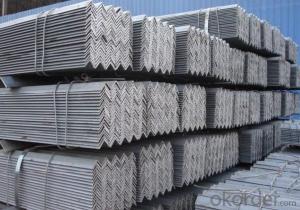When it comes to construction projects, one of the essential components is rebar, short for reinforcing bars. These steel bars are used to strengthen concrete structures, ensuring they can withstand the weight and pressure they will be subjected to. But how do you determine how much rebar you’ll need for your project? That’s where calculating the rebar weight per foot comes into play. Let’s dive into this topic with a more casual and friendly approach, breaking down the process into easily digestible bits.
What is Rebar and Why is it Important?
Before we get into the nitty-gritty of weight calculations, let’s first understand what rebar is and why it’s so crucial in construction. Rebar is made from steel and is used to reinforce concrete. It adds tensile strength to the concrete, allowing it to handle more weight and resist cracking or breaking. Without rebar, concrete structures would be much weaker and prone to failure.
The Basics of Rebar Weight Calculation
Now, let’s talk about the basics of calculating the weight of rebar per foot. The weight of rebar is determined by its diameter and the weight per unit length, which is typically measured in pounds per foot (lb/ft). The formula to calculate the weight is quite simple:
&8220;Weight per foot = (Diameter in inches Diameter in inches) 0.4165&8221;
This formula takes into account the fact that the weight of steel is approximately 490 pounds per cubic foot. The constant 0.4165 is derived from the weight of steel and the mathematical relationship of the circle’s area formula (pi radius squared).
Factors Affecting Rebar Weight
Several factors can affect the weight of rebar, including the type of steel used, the diameter of the bar, and the length of the rebar needed for the project. The type of steel can vary depending on the project’s requirements, with some projects requiring higher strength steel. The diameter of the rebar is also crucial, as a larger diameter will result in a heavier rebar. Lastly, the length of the rebar needed will directly impact the total weight required for the project.
Practical Examples of Rebar Weight Calculation
Let’s make this a bit more tangible with some practical examples. Imagine you’re working on a small residential project and you need to reinforce a concrete slab. You’ve chosen a 4 rebar, which has a diameter of 0.5 inches. Using our formula, you’d calculate the weight per foot as follows:
&8220;(0.5 0.5) 0.4165 = 0.104125 pounds per foot&8221;
Now, if you need 100 feet of this rebar, you’d multiply the weight per foot by the number of feet:
&8220;0.104125 100 = 10.4125 pounds&8221;
Tips for Accurate Rebar Weight Estimation
To ensure you have an accurate estimate of the rebar weight for your project, here are some tips to keep in mind:
– Always double-check the diameter of the rebar you’re using. A small mistake in measurement can lead to significant errors in your weight calculation.
– Consider the grade of steel being used. Different grades have different densities, which can affect the weight.
– Factor in the length of the rebar you’ll need. Longer lengths will naturally weigh more.
– Don’t forget to account for any additional accessories or fittings that may be required, as these can add to the overall weight.
The Emotional Side of Rebar Weight Calculation
While it may seem like a purely technical and unemotional task, calculating rebar weight can actually carry some emotional weight for those involved in construction. It’s about ensuring safety, reliability, and durability of the structures we build. Every calculation is a step towards creating something that will stand the test of time.
Wrapping Up
In conclusion, calculating the rebar weight per foot is a critical aspect of any construction project that requires reinforced concrete. By understanding the basics of the calculation, considering the factors that affect the weight, and using practical examples, you can ensure that you have the right amount of rebar for your project. Remember, it’s not just about the numbers; it’s about building something that will last.
So, the next time you’re faced with the task of calculating rebar weight, take a deep breath, trust the formula, and know that you’re contributing to the strength and longevity of the structures you’re working on.

